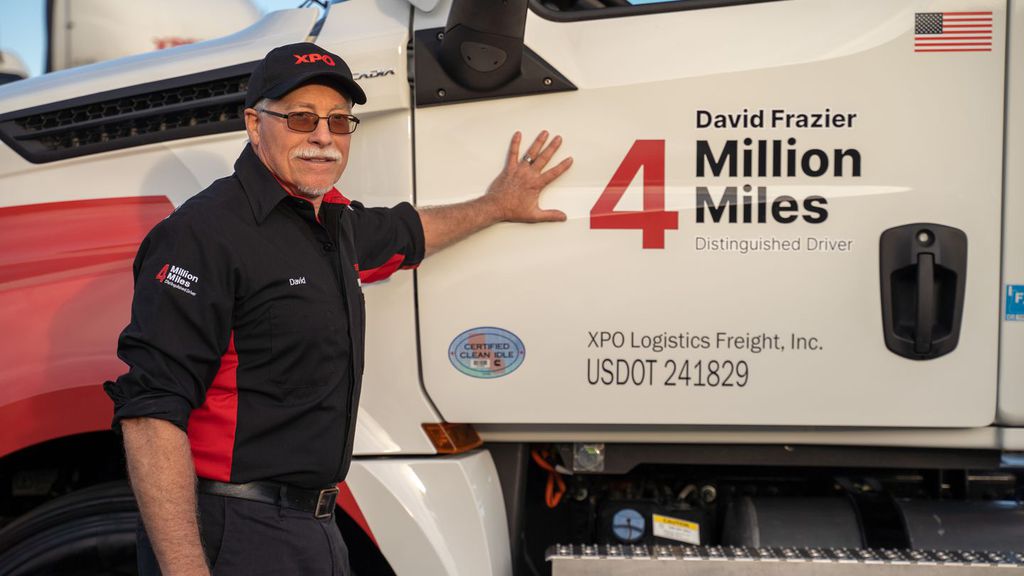Five Ways Truck Drivers Can Help Fight Against Human Trafficking

Across the globe, millions of people are victims of modern slavery, in particular human trafficking. In these situations, traffickers use physical violence, fraud and coercion to exploit people for profit including forced prostitution, domestic servitude and criminal exploitation, like running online scams.
Most people can’t fathom this happening in their backyard, but the reality is that human trafficking happens everywhere. According to the Global Slavery Index, there are an estimated 1.1 million people in the United States alone who are living in conditions of modern slavery. While human trafficking often begins online, physical locations such as truck stops, roadside restaurants, rest areas and motels or hotels serve as meeting points for physical transactions.
XPO is proud to support Truckers Against Trafficking, and with millions of trucks on the roads every day, drivers are well positioned to be the eyes and ears for law enforcement while on the road. With National Human Trafficking Prevention month taking place in January, here are five easy ways truck drivers can support the fight against human trafficking right now, including by becoming certified as a Trucker Against Trafficking.
Get the latest news and updates on XPO
1. Get Educated on the Signs of Human Trafficking
Part of the reason human trafficking is so hard to eliminate is that these activities often happen in plain sight. Unless you know what to look for, you might miss the subtle signs that someone is a victim and desperately needs help. Simply taking the time to learn more about the red flags of human trafficking could end up making a huge difference in someone’s life.
Some basic signs to watch for include, but are not limited to:
- Minors who appear to be engaging in commercial sex or are accompanied by an individual they don’t know.
- Unusual behavior such as exhibiting signs of fear or anxious behavior. The victim might be disoriented or confused indicating they possibly have been drugged.
- Human trafficked victims are often in poor physical health, including showing signs of physical abuse or malnourishment.
- Someone wearing inappropriate clothing for weather conditions could be a sign they were abducted or taken from another location.
- Most human trafficking victims may have reduced autonomy, including having their physical movements limited by another person, or not having control over money or their own identification documents.
- Strange environments could be a sign of human traffickers, including buildings with barred or covered windows, numerous security cameras, or drug or sexual paraphernalia.
2. Report Suspicious Activity
This is the most critical step that drivers can take if they suspect they’ve encountered a victim of human trafficking – either by calling the National Human Trafficking Hotline (888)-373-7888 or notifying law enforcement. Unfortunately, many people avoid contacting the police in these situations because they are concerned they may have misread the situation. It’s much better to let law enforcement determine if your observation is correct instead of looking the other way.
If you notice suspicious behavior or activity, you might only have a small window of time to help the victim. For this reason, you should keep the Human Trafficking Hotline number handy, either saved in your phone or written down in your truck.
Before making the call, be sure to capture as much information as possible to help law enforcement, such as a description of the alleged trafficker and victim, specific location, make, model, and color of their vehicle, and license plate numbers.
3. Join Human Trafficking Groups and Organizations
There are a number of amazing groups and organizations that are working hard to protect people from human trafficking. At XPO, we’re extremely proud that nearly 5,000 of our drivers have stepped up to become TAT-certified (Truckers Against Trafficking). This training is mandatory for all new drivers.
In addition to training and certifications, truck drivers can also volunteer with many of these groups to provide outreach or other support across the country.
4. Voluntarily Advocate for Stronger Human Trafficking Policies
Truck drivers can voluntarily make their views known to legislators and organizations fighting human trafficking, such as TAT, to strengthen laws and regulations covering these crimes and expand awareness of resources for victims.
5. Provide Direct Support for Potential Victims
If a driver spots human trafficking activity, it’s highly recommended to let law enforcement or other professionals intervene. By inserting yourself in the situation, you can put the victim in even greater danger. However, there may be circumstances when drivers can provide immediate, non-emergency help until law enforcement can arrive.
These activities might include letting the victim use your phone to make a call or to simply wait with them until law enforcement or social services arrives.
We Can All Help Fight Human Trafficking
Most people assume human trafficking is only an issue that pertains to long-haul truck routes, especially those that cross international borders. This couldn’t be further from the truth. Unfortunately, human trafficking has become prevalent even in our local communities. Local or regional LTL drivers can also help support this effort, along with concerned people everywhere. Ultimately, it’s up to each of us to do our part to defeat the scourge of human trafficking once and for all.
Further Reading


